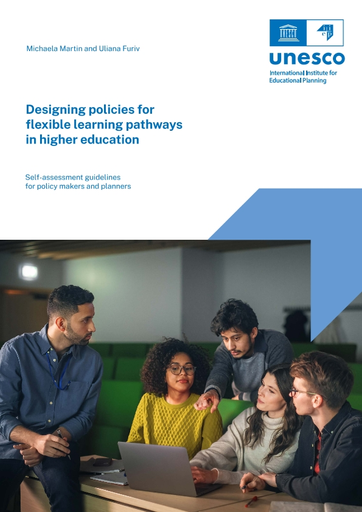shutterstock_2300906237.jpg

Are flexible learning pathways explicitly addressed in your national higher education policy framework? Do they prioritize equity concerns and facilitate student transfers across institutions? Does your system offer flexibility in terms of delivery mode, pace of studies and content?
These are just a few of 25 questions in a new self-assessment tool from IIEP-UNESCO, developed by Michaela Martin and Uliana Furiv, to help foster an effective ecosystem for flexible learning pathways in higher education.
Flexibility for equity
Flexibility is a critical concern today in higher education globally and is a policy priority in the Education 2030 Agenda.
With enrolments rising, student populations have become more diverse, including more first-generation learners, higher education returnees, refugee students, and other groups of non-traditional learners. Higher education systems need to adapt to the more diverse needs of learners today.
Flexibility can help promote equity in the sector, not only in terms of access but also during studies to help facilitate the participation and success of less privileged learners in higher education.
A key resource to inspire national higher education officials
Drawing on IIEP’s global research on flexible learning pathways, these guidelines are an important resource for developing higher education systems that ease the journey for learners of all ages – allowing them to get in, get through, and get out of higher education and into the world of work.
Tailored for government officials, education stakeholders, and organizations supporting the implementation of higher education reforms, the guidelines feature 25 policy questions spread across seven sections.
Users can navigate the self-assessment flexibly – depending on the level of development of flexible learning pathways in their system. A policy-maker or planner can decide whether to start from the first section and work through the guidelines progressively or to select a specific section that requires greater attention.
The guidelines also include examples of good practices from various countries, as well a list of further readings for each policy question to deepen one’s understanding on a particular policy question.
The final section includes a self-assessment matrix to reveal which areas in the system are well covered, which ones have gaps, and others still requiring development.







